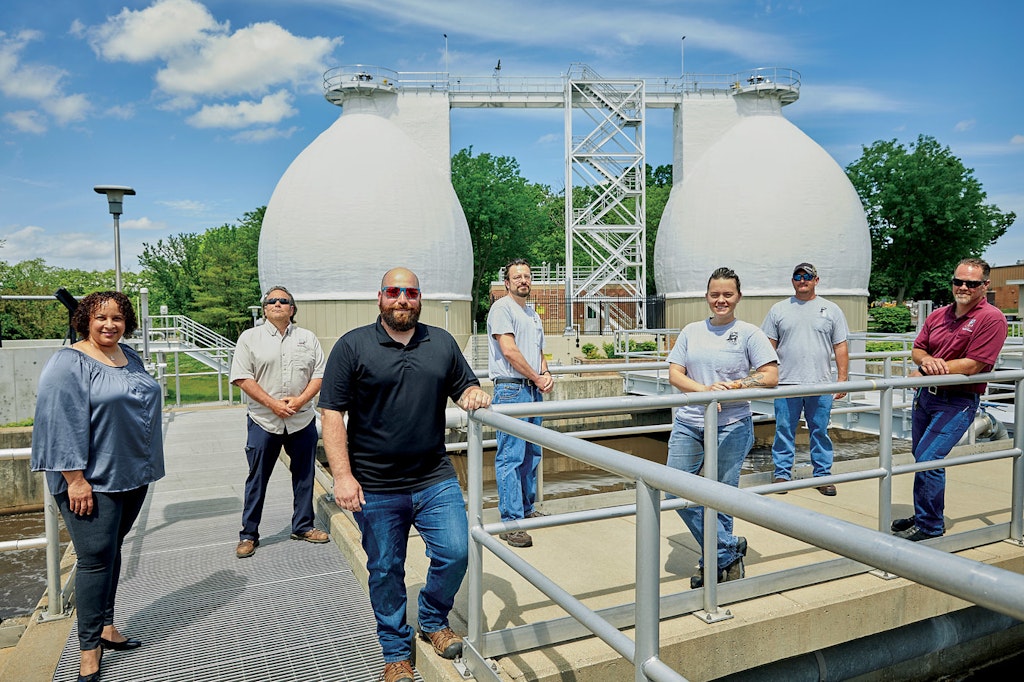Upgrading to a Bio-P Process Required Open Communication and a Proactive, Patient Approach at Wastewater Facility
Military Veteran Chris Rebone, and wastewater division manager of St. Charles, Illinois, speaks about how a total team effort helped an Illinois plant upgrade to a new bio-P process and make other improvements while sustaining operations and permit compliance.
By Jim Force
September 2020 Cover Story of Treatment Plant Operator magazine which appeared in print as “Wastewater Plant: A Home Run of an Upgrade”

How do you accommodate a two-year upgrade of a treatment plant, change over to new processes, keep staff abreast and involved, and maintain effluent compliance — all while dodging contractors, engineers and equipment suppliers?
In St. Charles, Illinois, Chris Rebone, wastewater division manager, says it takes a proactive and patient approach, open communication between departments, and the willingness to make mistakes and learn from them.
He should know. From 2017 to 2019, the city’s Main Wastewater Treatment Facility underwent a game-changing renovation that added a new biological phosphorus removal process, rehabilitated the digestion and biogas systems, and added other new equipment and processes.
Rebone gives credit for the successful transition to his staff of Samantha Metallo, assistant division manager; Dan Massa, John Huver, Steven O’Neil and Steven Streich, certified wastewater operators; James Smith, wastewater technician; and Richard Wadda, laboratory technician.
“It took a lot of ingenuity on their part,” he says. “I can’t thank our people enough for their due diligence and attention to detail. They accepted the challenge and ran with it.”
Extensive upgrade
The Main Wastewater Treatment Facility is one of two at St. Charles. The Westside plant treats 0.6 mgd on average and has a 0.7 mgd design capacity. The Main facility (9 mgd design, 7 mgd average) has Muffin Monster screens (JWC Environmental) in the influent pumping stations, followed by primaries, biological treatment, final clarification and UV disinfection (TrojanUV). Effluent discharges to the Fox River.
Biosolids are stabilized in a pair of egg-shaped digesters (Walker Process Equipment, A Div. of McNish Corp.), dewatered on Alfa Laval centrifuges, stored at the Westside plant and spread on corn and soybean fields in fall. Biogas powers the plant’s Walker Process Equipment boiler and heat exchanger system.
New state-imposed phosphorus removal requirements led the city to undertake the $17 million plant upgrade to biological phosphorus removal. Rebone says it made sense to rehabilitate the digesters and biogas system while the rest of the plant was under construction: “We thought it best to do everything at once.” The project involved:
Converting to a three-stage anaerobic-anoxic-oxic (A2O) system, with aerobic, anoxic and anaerobic zones for biological phosphorus removal.
Adding a new internal recycle pump station
Adding a primary sludge fermenter
Adding ferric chloride for chemical polishing
Replacing a sludge storage tank and installing a new biogas storage tank
Rehabilitating the digester piping and operation systems
Upgrading the biogas system
Clearing the hurdles
Plant management had to install these improvements on the fly. The challenge was double-edged: maintain compliant operations during construction and be able to operate the new processes once the project was complete.
Article continued here: https://www.tpomag.com/editorial/2020/09/upgrading-to-a-bio-p-process-required-open-communication-and-a-proactive-patient-approach-at-wastewater-facility
